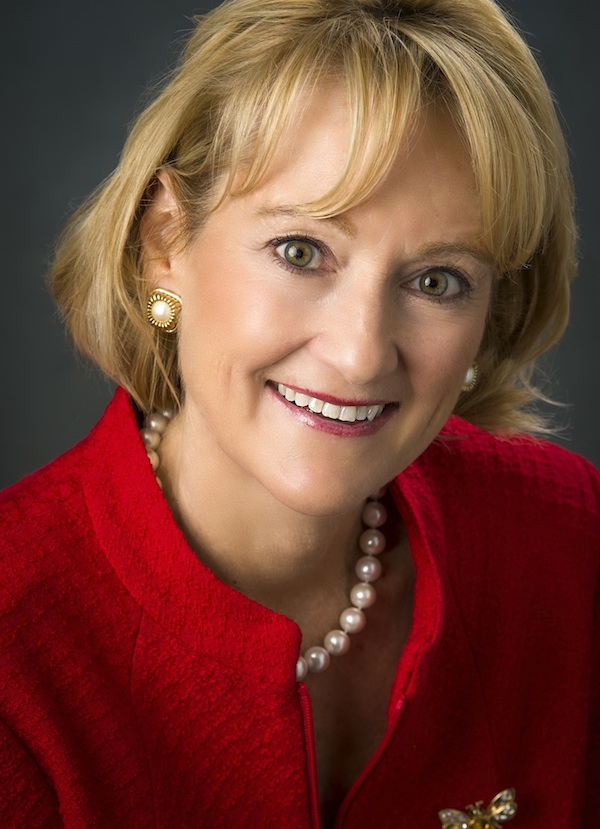
Is Unconscious Bias Affecting Your Judgment in the Workplace?
 If you have a brain, you have bias. The human brain is wired to take mental shortcuts. Also known as heuristics, these shortcuts are nature’s way of helping us to process information and make decisions quickly. We’re good at filtering the immediate environment by using our past knowledge and experiences to help us make decisions and future predictions, saving time and energy. But that means bias.
If you have a brain, you have bias. The human brain is wired to take mental shortcuts. Also known as heuristics, these shortcuts are nature’s way of helping us to process information and make decisions quickly. We’re good at filtering the immediate environment by using our past knowledge and experiences to help us make decisions and future predictions, saving time and energy. But that means bias.
Unfortunately, our brains aren’t foolproof.
And these biased decisions are not necessarily rational.
Let me give you an example from my own experience. I speak at venues around the world about women in leadership. As such, I’m on airplanes a lot. My mission is to create more gender diversity in our workplaces. Yet, I found myself looking into the cockpit as I boarded a recent flight, noting that our head pilot was a woman. My unconscious bias immediately rang the alarm bells. “There is a woman flying this big plane,” it said. “Can she really do it all by herself?” I sat quietly in my seat and pushed my mental pause button.
What was happening? I’m used to seeing men in that cockpit most of the time. I was used to seeing one pattern and my brain was quick to spot the anomaly, make a threat assessment, and jump to the conclusion that there was a problem. “Of course,” I told myself rationally. “This is a qualified pilot and I should feel just as safe in her hands as with anybody else.”
Our unconscious bias needs a reset.
Tammie Jo Schults, a veteran pilot for Southwest Airlines did more than just save the lives of her passengers and crew members when she calmly landed flight 1380 following a catastrophic engine explosion. She also helped us all press that pause button when it comes to feeling safe with a woman at the helm. Our minds can now reset. When we next see a female pilot in the cockpit we can picture the heroic Tammie Jo, a woman who blazed a trail for women fighter pilots and who calmly and safely landed a passenger jet under the most extreme conditions one could imagine.
So how do we learn from this and reset our mental models in the workplace?
Organizational problems and issues are more complex today, they come at us faster, and the scrutiny is greater. If we continue to have group think we’re going to be left behind. We need to make sure we can remove our filters and be open to listening to a broader range and diverse set of thinking and ideas – in order to get the best possible answers. To have cognitive diversity in our workplace, we need to have a broad range of thinking styles around the table and make sure that all voices are heard and valued.
Remove the labels.
Remember, if you have a brain, you have bias. We need to train ourselves to see with fresh eyes the issues that we make unconscious assumptions about. Instead of making hiring decisions based on ‘will that person fit in’, or ‘will this person meet our targets’, try assessing candidates by the expertise and skills they bring. This might sound simple, but does your organization remove the names, background, age, and gender information from resumes when hiring or making payroll decisions? Take control of your unconscious biases by simply removing the labels when you next make a hiring or promotional decision – and see what happens.
For decades now, the world’s best orchestras have been overcoming gender discrimination by using blind auditions. Curt Rice, President of the Oslo and Akershus University College of Applied Sciences and head of Norway’s Committee on Gender Balance and Diversity in Research, reported that by having candidates play behind a screen so the jury could not see them, a surge in the number of women offered positions resulted. Gender discrimination is close to being eliminated in professional orchestras around the world. How does your workplace measure up?
If you have a brain, you have bias. For our organizations to thrive, we need all voices to be heard. We need to consciously press the pause button so that we can remove our filters and avoid sabotaging ourselves with our self-limiting biases.
Find out more about how to develop an inclusive workplace environment

MIND THE GAP WEBCAST: Three ways to create an inclusive culture that supports gender equality
Join SHAMBAUGH President Rebecca Shambaugh for a free webcast on June 12th at 10:00am ET. Rebecca will be discussing the first steps you can take to improve your organization’s leadership culture. Find out how you can retain your top talent, accelerate your leadership pipeline, and create a culture where everyone can thrive.
Sign up here to guarantee your place
Rebecca Shambaugh is a leadership expert on building inclusive cultures and high performance cultures. She is the Founder of Women in Leadership and Learning, a regular contributor to Harvard Business Review, and blogger for the Huffington Post. She is author of the best-selling books It’s Not a Glass Ceiling, It’s a Sticky Floor and Make Room for Her: Why Companies Need an Integrated Leadership Model to Achieve Extraordinary Results.
We’re on a mission to develop high-performing and inclusive leaders who transform workplace cultures so everyone can thrive. Find out more about us at: www.shambaughleadership.com

Leave a Reply